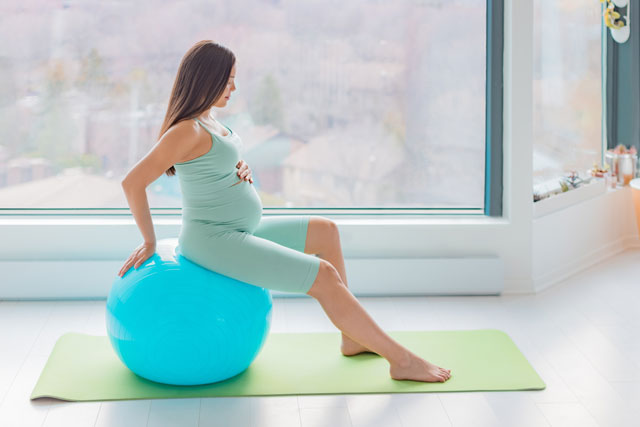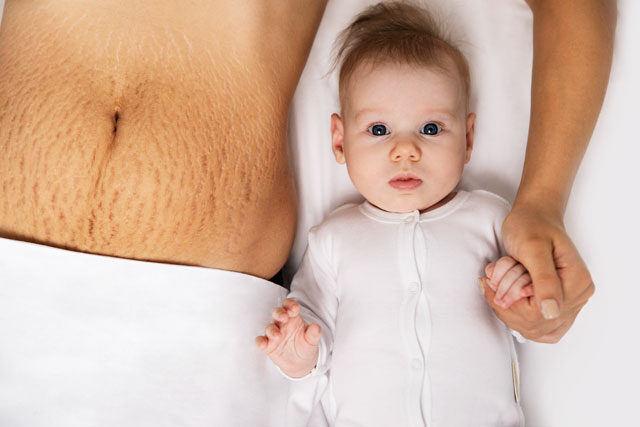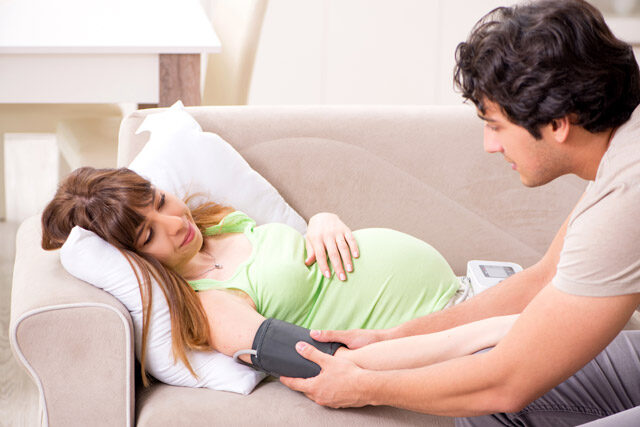Perhaps, you have already tried an exercise ball to improve your posture or enhance your abdominal core. However, such an exercise tool can do more than that for a pregnant woman. It can be a wonderful addition to a woman’s exercise routine during the third trimester and earlier.
Women find balance balls particularly helpful after 30 weeks of pregnancy. At this point, most of them start to experience the hardships of pregnancy, such as swollen feet and hands, pains, bloating, etc. Maintaining their regular training routine can get challenging, and a ball can come as an asset. It can help women meet their exercise requirements, strengthen their abdominal wall, and even help during labor.
How Safe is an Exercising Ball for Pregnant Women?
Healthcare specialists often encourage pregnant women to use a fitness ball. However, each case is different, and individual recommendations should be given. In general, such exercise is safe and beneficial. It can help adjust women’s physical activity needs to their health and pregnancy symptoms. For example, you can modify a training routine to suit different energy needs, treat sore body parts, and adapt to continual body changes during pregnancy. In fact, such exercising can relieve many discomforts of pregnancy, such as pain in the lower abdomen or back, morning sickness, and unstable energy levels.
A birth ball can enhance and diversify regular pregnancy exercises. However, it is not for everyone. These balls require a good deal of balance and caution. Women should be careful during its usage and have someone to help them if anything goes wrong. Here are some tips for keeping safe during the ball exercise:
- Be careful about spilling any liquid near the ball. Don’t use it until everything is completely dry. Otherwise, you may slip.
- Consider using a ball on a carpeted area instead of smooth surfaces.
- Exercise balls don’t burst. Normally, they will start to slowly deflate when punctured. Still, you better keep them away from sharp corners or objects.
- Don’t rush with the ball. Take your time and find balance before making any moves.
- Best to keep both your feet on the floor at all times. Don’t challenge your balance during exercising if you have trouble with it on the ball.
- Ask your healthcare provider before introducing some new exercises and tools into your routine. Have their consent before committing to any changes.
Choosing the Right Ball
Finding a comfortable sitting on a birthing ball can be a challenge at first. You should choose the right size of the ball, considering your height. Try sitting on the ball in a store or gym before buying it. While testing, start by spreading your legs so your knees are apart and feet are far from one another. Your feet should stay on the ground, heels aren’t lifted. Your knees should not be higher than your hips. Keep your upper body straight.
Such a posture should help you find balance right away while also feeling comfortable. There should be no pain or pressure in the knees or lower back. However, if you still struggle to find an easy sit, ask friends, trainers, or midwives to assist you in finding the right ball.
Keep in mind that a good balance ball is resistant to strong pressure. So you shouldn’t worry about your weight when choosing one.
Can I Use It during Labor?
It’s not unheard of for expecting mothers to stay on the fitness ball during labor. After all, this period can last a long time. Women should feel as comfortable as possible in such a challenging position. Some women prefer to walk or spend this time in a warm bath as an alternative.
A ball can be of help at such a time. It can distract and help with the pain, help women relax, and have a bit of rest between contractions. It doesn’t matter if you have done such exercises before labor, you can still use the ball before birth.
To ease your sufferings in labor, try to find the most comfortable position on the ball. For example, you can try the hands and knees position hanging over the ball. Another option is rocking side to side or repeating the familiar heap movements you’ve practiced during pregnancy. These movements may assist the labor in several ways:
- repeating a pelvic tilt to the left or right will help reduce any lower back tension or tightness in the hips;
- doing circular motions with your hips may help place the baby in the preferred position before birth;
- drawing figure 8 will decrease lower back tightness and direct the baby’s head to the pelvic area;
Also, holding upright positions while sitting on a ball will prepare your pelvis for birth while letting gravity do its work and push the baby further down.
After Birth
A fitness ball can also relieve your pain after birth. So don’t send it away just yet. For example, after giving birth, many women experience discomfort or soreness in the area between the vagina and the anus. Consider deflating the ball to make it softer and use it instead of a chair to feel more comfortable when sitting.




